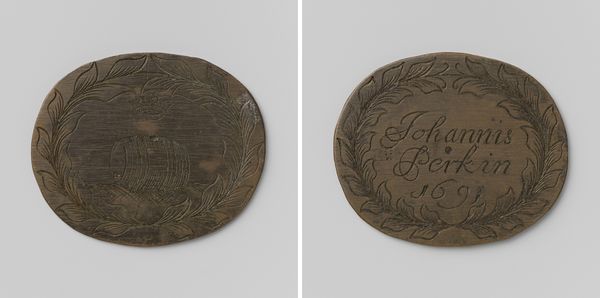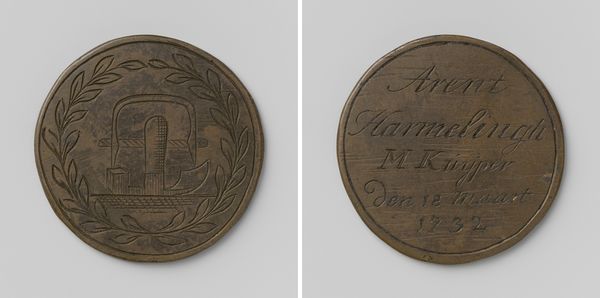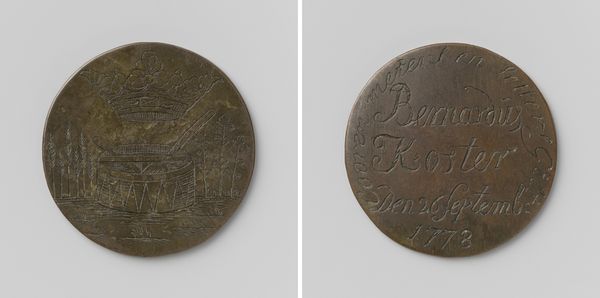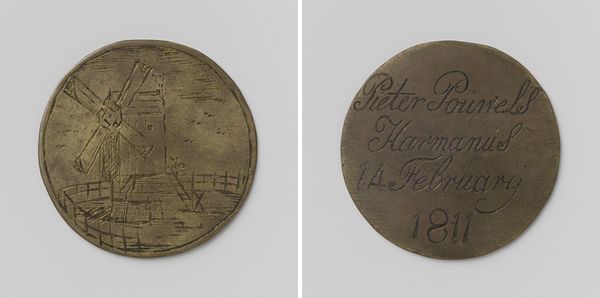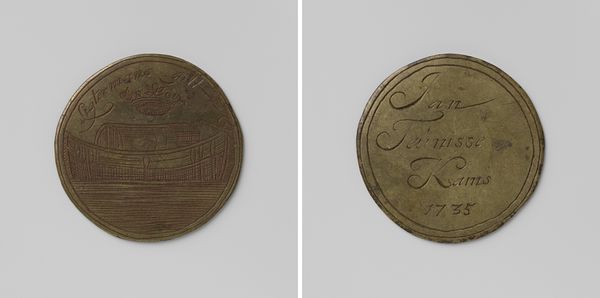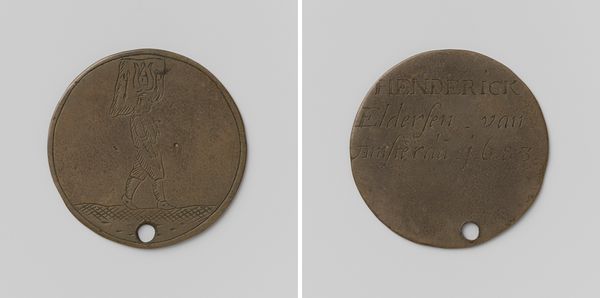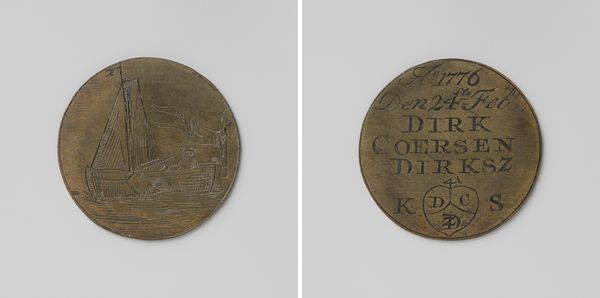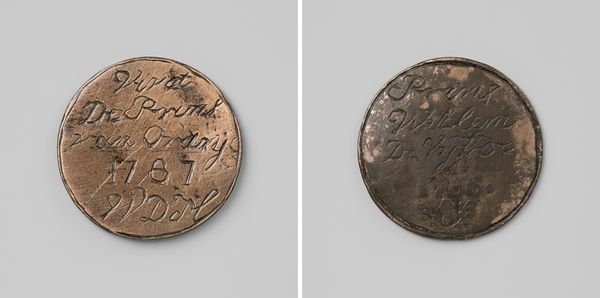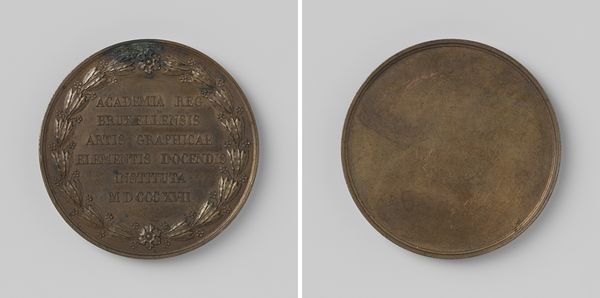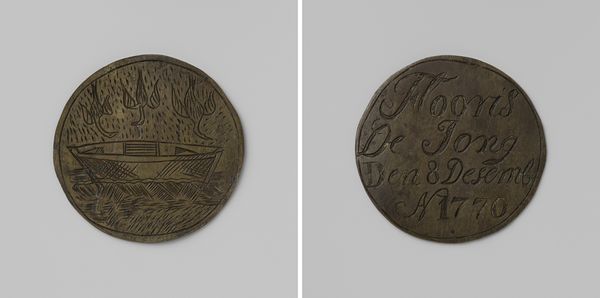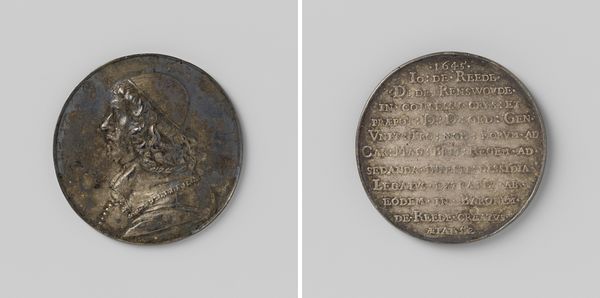
metal, relief, sculpture, engraving
#
baroque
#
metal
#
sculpture
#
relief
#
sculpting
#
sculpture
#
engraving
#
statue
Dimensions: diameter 4.9 cm, weight 26.87 gr
Copyright: Rijks Museum: Open Domain
Editor: Here we have a guild badge created by Gerrit Hilligers in 1746. It seems to be made of some kind of metal. Its diminutive size makes me think of a coin or token. What can you tell me about its function as a marker of labor and its significance within Amsterdam's social hierarchy? Curator: Absolutely. These aren’t merely decorative objects. They functioned as identifiers and markers of status within a rigidly structured society. How do you interpret the symbolism present? Editor: Well, I notice the coat of arms on one side, surrounded by what looks like laurel, but I don't know much about heraldry or the hat beneath it. What's important about those elements? Curator: The coat of arms is likely tied to Amsterdam, and the laurel hints at honour and skill. But that hat isn’t just any hat; it’s a representation of the hoedemakers, the hatmakers' guild. Consider the significance of guild membership. What social and economic advantages did it confer? How did this impact artisans and their communities? Editor: It must have meant security, perhaps even privilege, right? By controlling production, the guild protected its members. So, owning this badge meant belonging to something bigger than oneself? Curator: Exactly. Now think about who *didn't* have access to guilds. The stories this object silences are equally important. What about women artisans, or those excluded based on religious or ethnic backgrounds? How did the guild system perpetuate existing inequalities? Editor: That makes you see this object so differently. It’s not just a piece of crafted metal; it's a marker of both belonging and exclusion. Curator: Precisely. And reflecting on those dualities is how we engage with history in a meaningful, critical way. It makes us question how such systems of power continue to function, even today. Editor: That gives me a lot to consider. Thank you!
Comments
No comments
Be the first to comment and join the conversation on the ultimate creative platform.
